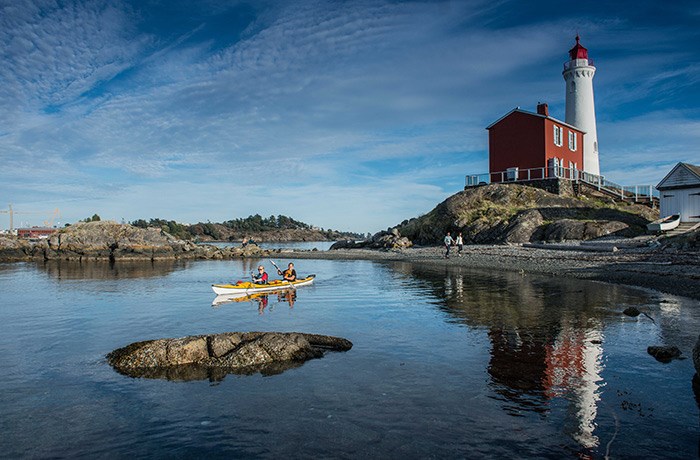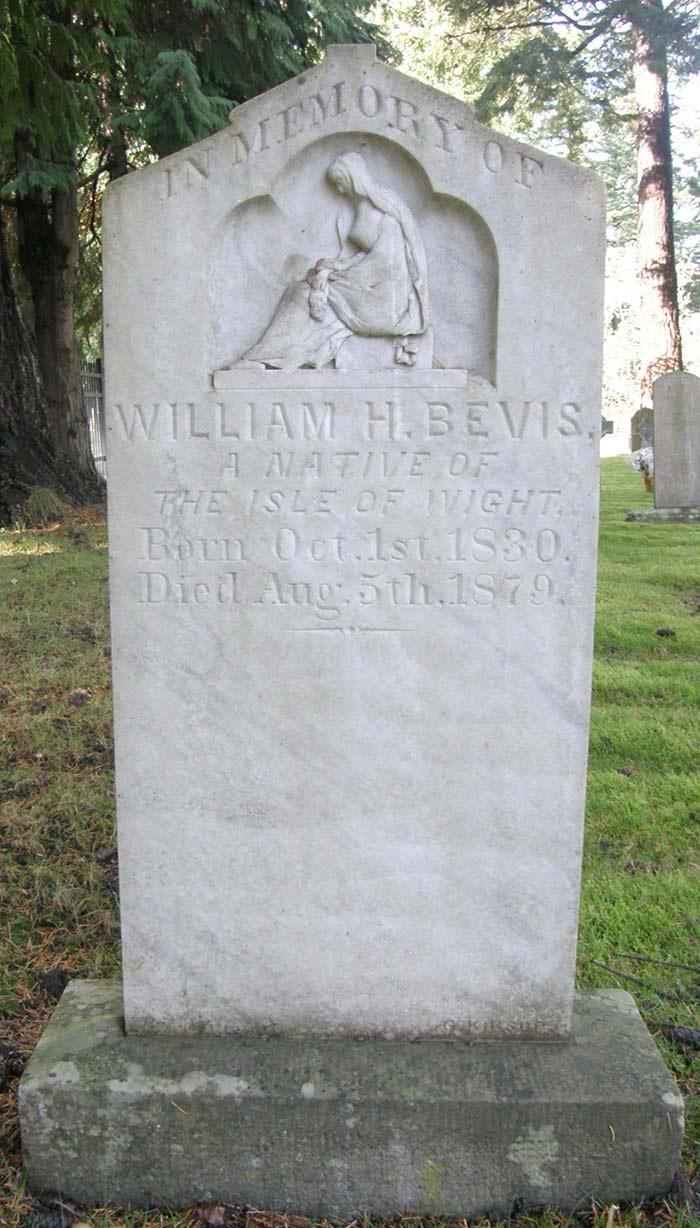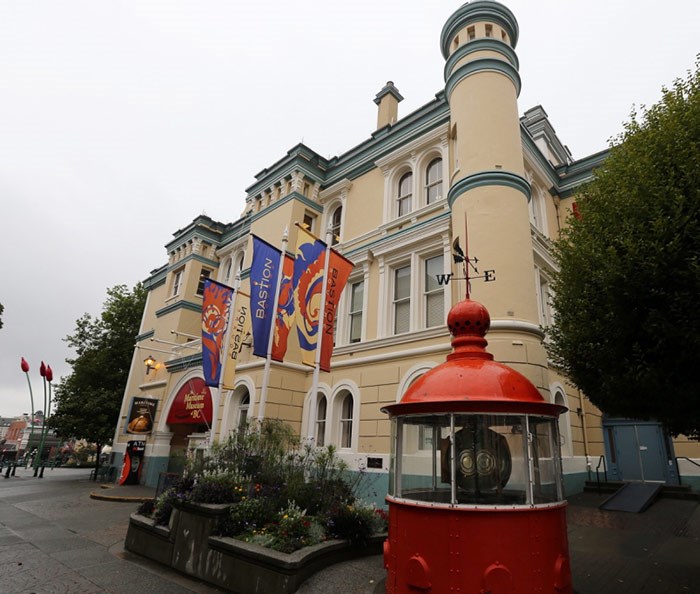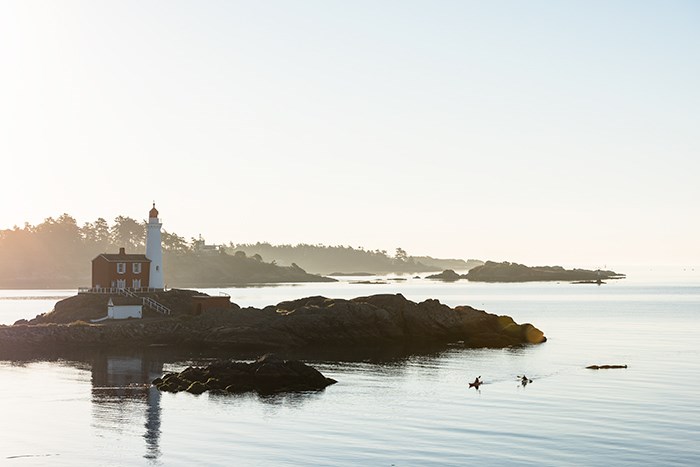 Fisgard Lighthouse was the first lighthouse to illuminate the West Coast of Canada. It made its shining debut at 4:00pm on November 16, 1860 and has since become a fixture of Victoria's coastal history. To celebrate its 157th year of operation, we asked the team at Fort Rodd Hill and Fisgard Lighthouse National Historic Site to share some of the lesser known facts about Victoria's most famous lighthouse.
Fisgard Lighthouse was the first lighthouse to illuminate the West Coast of Canada. It made its shining debut at 4:00pm on November 16, 1860 and has since become a fixture of Victoria's coastal history. To celebrate its 157th year of operation, we asked the team at Fort Rodd Hill and Fisgard Lighthouse National Historic Site to share some of the lesser known facts about Victoria's most famous lighthouse.
1. The half-blind lighthouse keeper
Joseph Dare, who was the keeper of the lighthouse from 1884 to 1898, seemed to have been rather accident prone. On February 28, 1890, Dare was walking along the shore shooting at mink for sport, when his firearm exploded, sending the breech and shot back into his eye. He was so covered in blood and unconscious, that when his wife found him she assumed he was dead. He survived, but lost the sight in one eye.
He spent four months in the hospital without pay before returning to duty half blind in June. Eight years later, he drowned while rowing home across the harbour from Esquimalt. He was buried at the Veteran's Cemetery, God's Acres in Esquimalt. His wife and child were the beneficiaries of a charity dinner/dance fundraiser at the Blue Ribbon hall in Esquimalt later that year.
The Daily Colonist newspaper article that covered the accident can be found HERE.
2. The first female lighthouse keepers in Canada
William Bevis was lighthouse keeper from 1861 until his death in 1879. He led an intriguing life, coming to BC with the 1858 Gold Rush, and acting in various capacities as a postmaster on the mainland, as a constable in Victoria, and as the Dominion meteorological officer during his time at Fisgard Lighthouse. In fact, he was the first meteorological officer for Canada in British Columba!
 At his passing, there were no other men in the area who were qualified to be lighthouse keepers, so his wife Amelia and their niece Mary, who had been assisting him all those years, ended up being the temporary keepers (likely the first paid female keepers in Canada), until a suitable, male replacement could be found. Officially, women were not allowed to hold the job of lighthouse keeper.
At his passing, there were no other men in the area who were qualified to be lighthouse keepers, so his wife Amelia and their niece Mary, who had been assisting him all those years, ended up being the temporary keepers (likely the first paid female keepers in Canada), until a suitable, male replacement could be found. Officially, women were not allowed to hold the job of lighthouse keeper.
3. The fire that almost burned Fisgard Lighthouse to the ground
In 1957 a fire damaged the lighthouse, particularly affecting the roof and interior contents, and substantial restoration had to be done to the historic building. There are some small reminders of this event inside the building still, with charred pieces of wood where perhaps window shutters once were attached to the walls,
4. The German architect
 The lighthouse's architect was the Berlin-born talent behind many of Victoria's most well known 19th century buildings. Hermann Otto Tiedemann designed the original legislative buildings for the colony in 1864, also known as the 'bird cages', which were replaced in the 1890s by the iconic Francis Rattenbury legislature we know today. His most recognizable surviving building is that of the 1889 courthouse, which later housed the Maritime Museum of British Columbia, and still stands today in Bastion Square.
The lighthouse's architect was the Berlin-born talent behind many of Victoria's most well known 19th century buildings. Hermann Otto Tiedemann designed the original legislative buildings for the colony in 1864, also known as the 'bird cages', which were replaced in the 1890s by the iconic Francis Rattenbury legislature we know today. His most recognizable surviving building is that of the 1889 courthouse, which later housed the Maritime Museum of British Columbia, and still stands today in Bastion Square.
5. The straight of Juan de Fuca

Fisgard Lighthouse served both civilians and military personnel by providing a guiding light into the harbour for CFB Esquimalt and into the busy trade hub of Victoria, which had become extremely busy due to the onset of the 1858 Fraser Gold Rush, which in turn prompted the colonial government to request the resources necessary to build and operate the lighthouse starting in 1860.
The straight of Juan de Fuca is quite treacherous, and construction of the lighthouse enabled ships to navigate safely in this narrow zone of rocky outcrops, thus promoting trade and settlement. Since Fisgard Lighthouse helped to guide British Royal Navy ships into Esquimalt Harbour and later Royal Canadian Navy vessels, it played a central role in the life of seamen at the Esquimalt naval base.
The causeway that visitors now walk to get out to the lighthouse is a relatively recent addition to the site. Originally, lighthouse keepers and their families would have to row from the shore to Fisgard Island. In 1951, the causeway was added, not to aid visitation to the lighthouse, but rather as a military feature, which acted as a barrier to any hostile torpedoes that might be fired on Esquimalt harbour. Few visitors wandering the causeway today would guess that the path was designed to protect the Royal Canada Navy's ships, anchored in Esquimalt harbour.
Admission to Fisgard Lighthouse is free as part of Canada 150. To learn more about Fisgard Lighthouse, visit the Parks Canada NHS website HERE.


